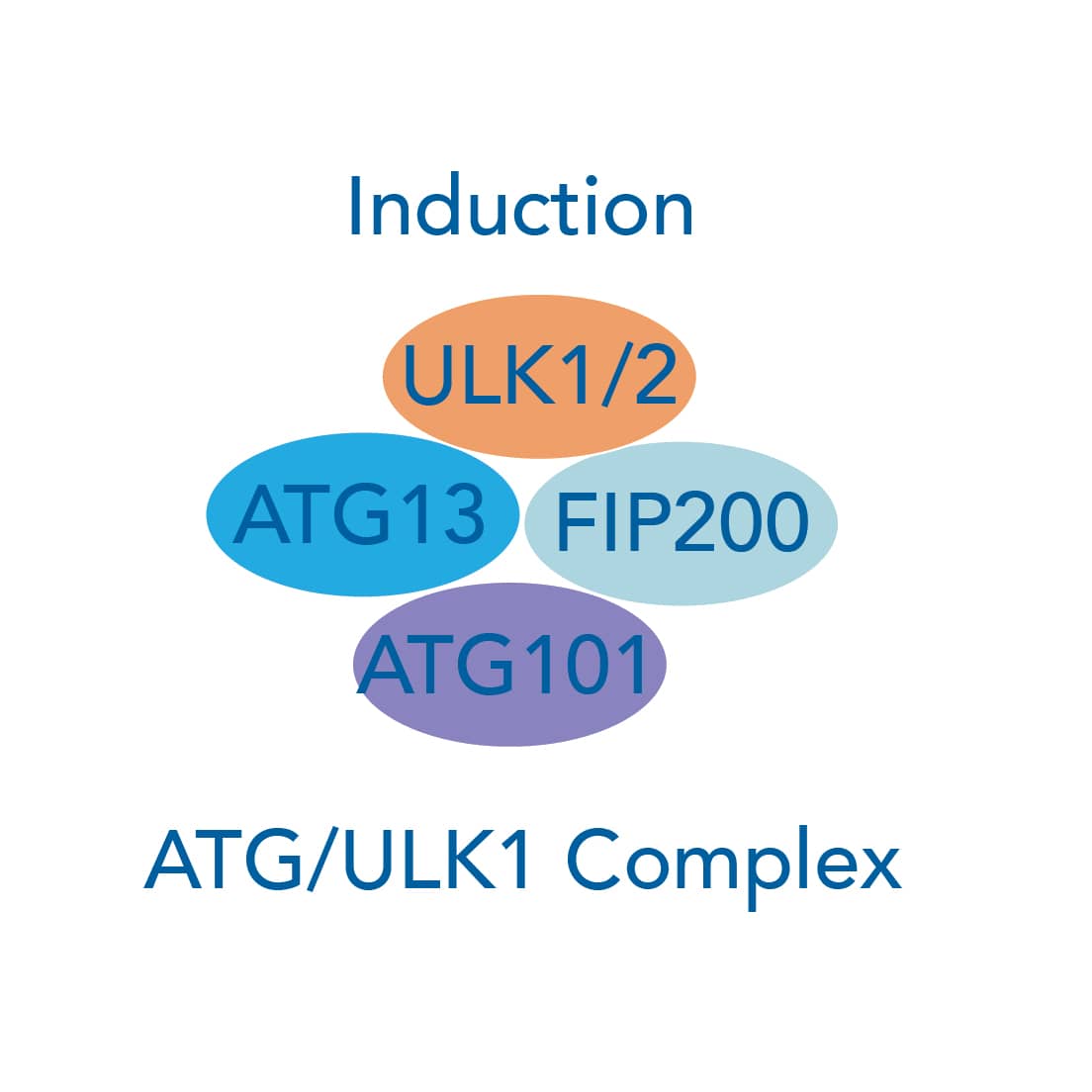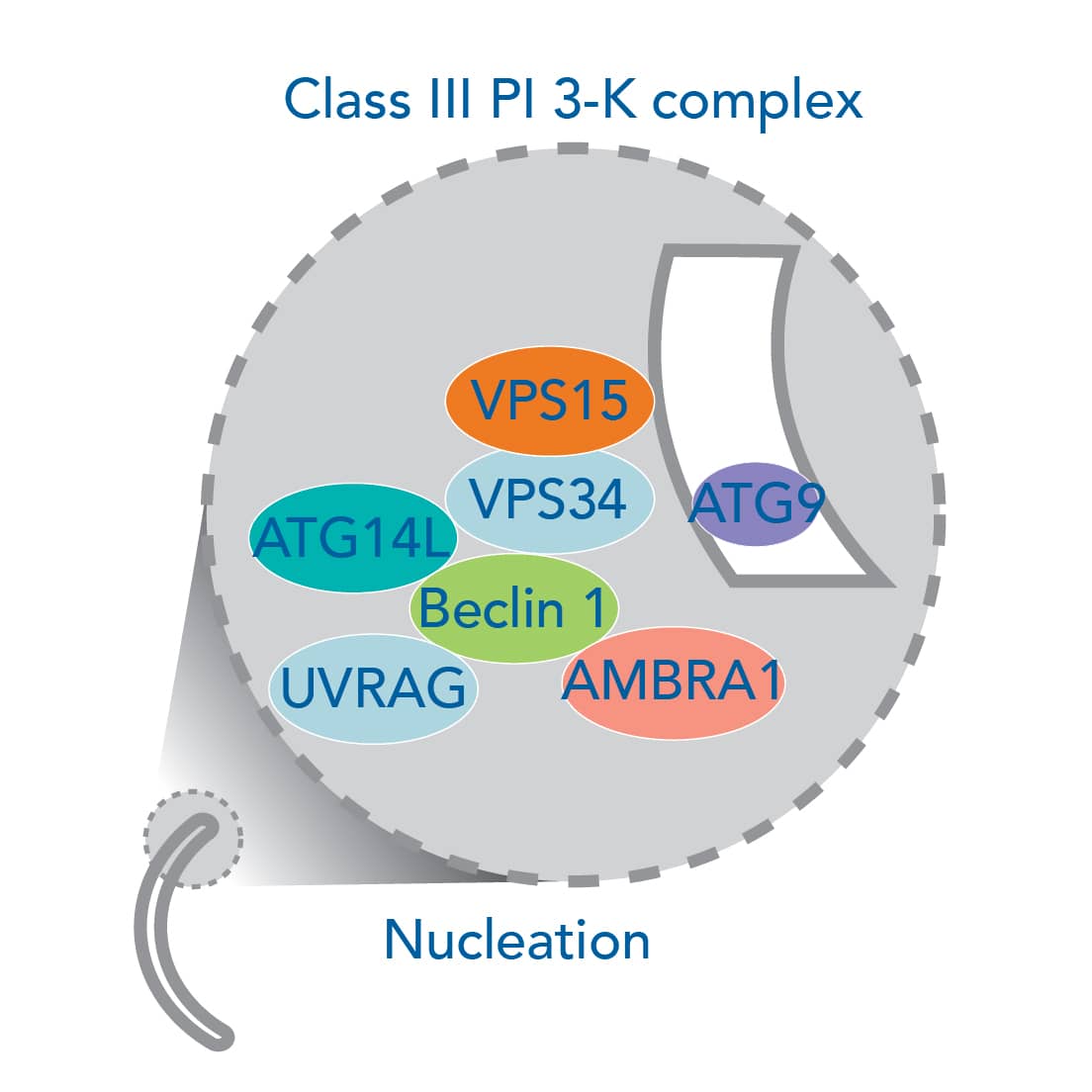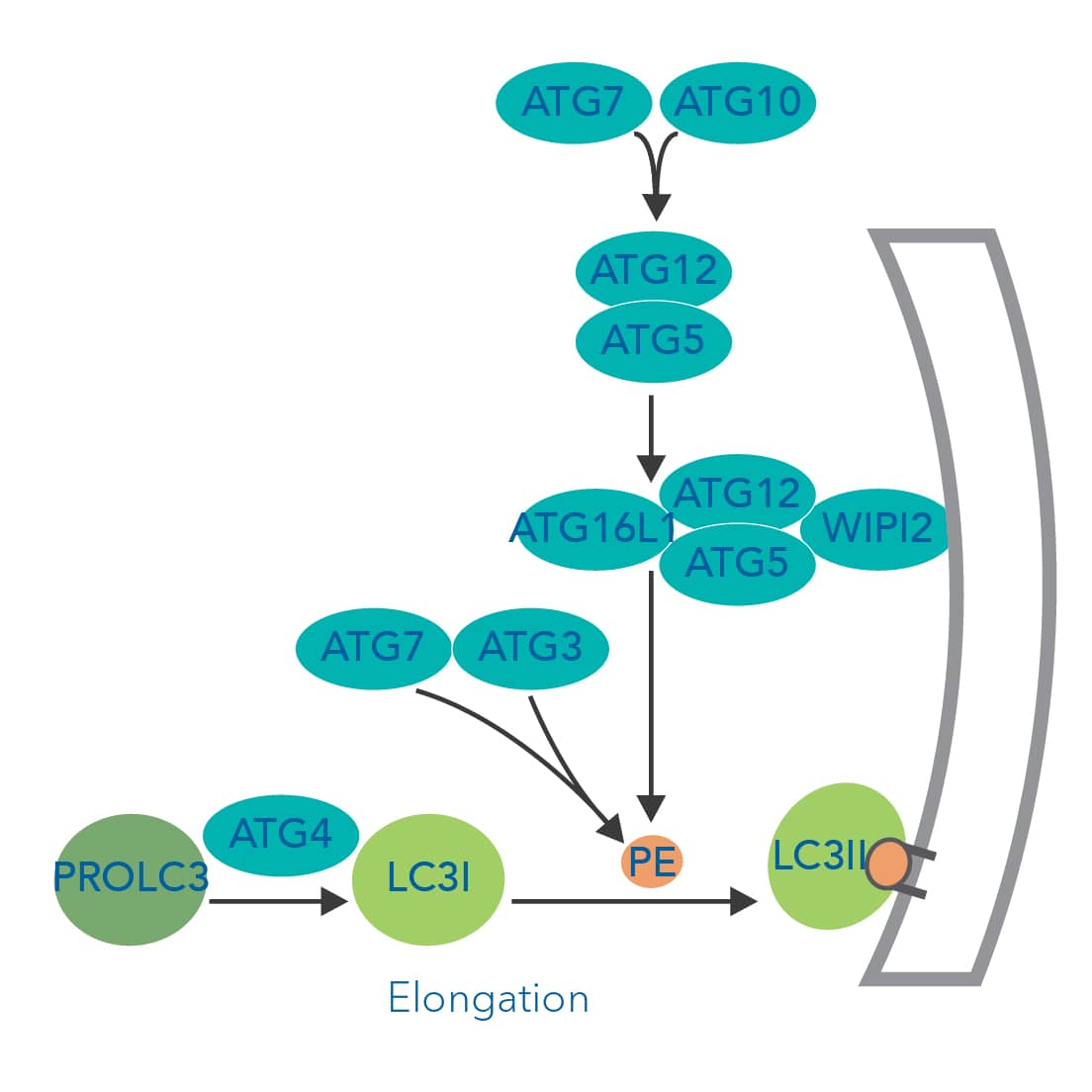By Christina Towers, PhD
What is autophagy?
Autophagy is the catabolic process that degrades cytoplasmic material via the lysosome. The process of macroautophagy was originally characterized in yeast, where the core autophagy-related proteins (ATGs) were identified. In this system, the multistep process of phagophore initiation and elongation as well as the conjugation machinery that mediate efficient autophagosome completion were determined and cloned to assess function. The mechanisms of starvation-induced autophagy as well as many of the selective autophagy processes were also modeled in yeast. Homologues to all of these core autophagy proteins have now been identified in other model organisms as well as higher eukaryotes, including Drosophila melanogaster, Caenorhabditis elegans, Zebra fish, mice, and humans1,2.
Autophagy signaling pathway: Begins with induction and nucleation of a phagophore, followed by elongation to form an autophagosome; this unique double-membrane structure will go on to play a role in recycling and disposing of cellular waste in conjunction with lysosomes through autophagocytosis.
Model organisms to study autophagy
Throughout biology, model organisms have played an instrumental role in defining key molecular mechanisms with pathological relevance, and autophagy models are no different. For example, in C. elegans, paternal mitochondria were shown to be degraded by autophagy in developing embryos3,4 – a finding that answered the age-old question of why only maternal mitochondria are inherited in eukaryotes. Autophagy in C. elegans was also first associated with longevity and increased life span for genetic inhibition of many ATGs would suppress the extended life phenotype induced by dietary restriction5,6.
Drosophila models of autophagy have also provided high impact findings, for autophagy in the tumor microenvironment was shown to be sufficient to initiate dormant tumor growth7. These discoveries and many others have set the ground work for more physiologically relevant studies in zebrafish, mouse models, and human cell lines.
Zebrafish
Due to their speed of development, large cohort size, and optical clarity, zebrafish are an ideal system, and they are becoming an increasingly more accessible model system to study autophagy. The publication of a detailed account of the core autophagy proteins and their zebrafish orthologues has opened the door for genetic manipulation of autophagy with morpholinos, siRNAs or CRISPR/Cas9. In the last decade, a plethora of tools have been created, including transgenic and fluorescent reporter fish, that are paving the way for future studies. For example, the staple experiment to measure autophagic turnover is via LC3-II turnover or flux, and both the single fluorophore-labeled LC3 reporter fish as well as the tandem-tagged LC3 – harboring the pH stable mCherry and the pH sensitive GFP – have now been created. Physiologically relevant transgenic models exist for numerous human diseases, particularly neurodegenerative pathologies, including Huntington's disease, tauopathy, and amyotrophic lateral sclerosis (ALS)8. While some hurtles still exist, i.e. gene duplications, zebrafish are a promising model organism to study the role of autophagy in different pathologies.
Despite the caveats associated with mouse models, including long gestation periods, small cohorts size, restricted embryo accessibility, as well as overall cost, they are still the dominant model organism used to study autophagy particularly in the context of cancer and neurodegenerative diseases. Alternative models, however, provide an increasing number of advantages, particularly for studying basic cell biology processes like autophagy.

Christina Towers, PhD
University of Colorado (AMC)
Dr. Towers studies the roles of autophagy, apoptosis and cell death in cancer.
-
Chen, Y. et al. (2017) Approaches for Studying Autophagy in Caenorhabditis elegans Cells
-
Mathai, B. J. et al. (2017) Studying Autophagy in Zebrafish Cells
-
Sato, M. & Sato, K. (2011) Degradation of paternal mitochondria by fertilization-triggered autophagy in C. elegans embryos Science 334:1141-1144.
-
Al Rawi, S. et al. (2011) Postfertilization autophagy of sperm organelles prevents paternal mitochondrial DNA transmission Science 334:1144-1147.
-
Hansen, M. et al. (2008) A role for autophagy in the extension of lifespan by dietary restriction in C. elegans PLoS Genet
-
Jia, K. & Levine, B. (2007) Autophagy is required for dietary restriction-mediated life span extension in C. elegans. Autophagy 3:597-599.
-
Katheder, N. S. et al. (2017) Microenvironmental autophagy promotes tumour growth Nature 541:417-420.
-
Fleming, A. & Rubinsztein, D. C. (2011) Zebrafish as a model to understand autophagy and its role in neurological disease Biochim Biophys Acta 1812:520-526.


